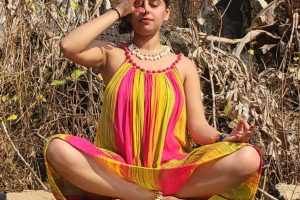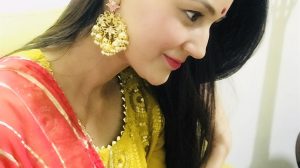Odisha, located on the eastern coast of India, is a state rich in cultural heritage and artistic traditions. Its history, spanning several millennia, has shaped a unique cultural landscape that reflects a blend of ancient rituals, classical art forms, and vibrant festivals. This article delves into the art and culture of Odisha, tracing its evolution through history and examining its contemporary significance.
|| By Areeba Tasneem
Odisha’s cultural history is a tapestry woven with influences from various dynasties and civilizations. The region’s earliest cultural expressions can be traced back to the pre-historic era, with evidence of human settlements dating back to the Stone Age. However, it was during the reign of the Kalinga Empire (circa 3rd century BCE) that Odisha’s cultural identity began to take shape.
The Kalinga War (261 BCE), fought between the Mauryan Empire under Ashoka and the state of Kalinga, marked a turning point. Ashoka’s subsequent conversion to Buddhism had a profound impact on the region, leading to the construction of stupas and the spread of Buddhist teachings. This era saw the creation of rock-cut caves and monasteries, such as those in Udayagiri and Khandagiri.
The subsequent periods saw the rise of Hindu dynasties, including the Eastern Ganga and the Gajapati rulers, who left an indelible mark on Odisha’s cultural and architectural heritage. The construction of magnificent temples like the Jagannath Temple in Puri, the Sun Temple in Konark, and the Lingaraja Temple in Bhubaneswar during these periods established Odisha as a significant center of Hindu worship and culture.
Odisha’s art forms are diverse, encompassing both classical and folk traditions. The state’s classical dance form, Odissi, is one of the eight classical dance forms of India. Originating in the temples of Odisha, Odissi is characterized by its graceful movements, expressive gestures, and intricate footwork. The dance form narrates religious stories and is deeply connected to the worship of Lord Jagannath.
Folk arts in Odisha are equally vibrant. Patachitra, an ancient form of scroll painting, is known for its intricate designs and mythological themes. These paintings, made on cloth or dried palm leaves, often depict stories from the Ramayana, Mahabharata, and the life of Lord Jagannath. The art form has been preserved and passed down through generations, particularly in the village of Raghurajpur, which is a hub for Patachitra artists.
The art of sand sculpting is another unique tradition of Odisha, with artists from Puri gaining international acclaim. The annual International Sand Art Festival held in Puri showcases the incredible talent of these sculptors, who create intricate and monumental sand sculptures on the beach.
Music and dance are integral to Odisha’s cultural fabric. Odissi music, with its distinct ragas and talas, provides the musical backdrop for Odissi dance performances. The state’s folk music is equally diverse, with forms like Sambalpuri, Dalkhai, and Ghoda Nacha reflecting the rhythms of rural life and local festivals.
The Mahari dance, a precursor to Odissi, was performed by devadasis (temple dancers) in the temples of Odisha. This tradition gradually evolved into the classical Odissi dance that is performed on stages worldwide today.
Festivals in Odisha are a vibrant display of the state’s cultural richness. The most significant festival is the Rath Yatra, held annually in Puri. This grand chariot festival, dedicated to Lord Jagannath, attracts millions of devotees from across the world. The sight of the enormous, elaborately decorated chariots being pulled through the streets is a spectacle of devotion and community spirit.Other important festivals include Durga Puja, Diwali, and Makar Sankranti, each celebrated with unique rituals, music, dance, and feasts. The Raja Parba, a festival celebrating womanhood and the onset of the monsoon, is marked by swings, traditional games, and special delicacies.
Odisha’s architectural heritage is a testament to its rich cultural history. The temples of Odisha, built in the Kalinga style of architecture, are known for their grandeur and intricate carvings. The Sun Temple at Konark, a UNESCO World Heritage site, is an architectural marvel designed in the shape of a colossal chariot. Its intricate stone carvings depict various aspects of life and mythology, showcasing the artisans’ extraordinary skill.
The Jagannath Temple in Puri, one of the Char Dham pilgrimage sites, is another iconic structure. Its annual Rath Yatra is a major event in the Hindu calendar. The Lingaraja Temple in Bhubaneswar, dedicated to Lord Shiva, is renowned for its exquisite carvings and imposing structure.
In contemporary times, Odisha continues to be a hub of cultural activity. The state hosts numerous festivals and events that celebrate its traditional arts while embracing modernity. The Konark Dance Festival, held against the backdrop of the Sun Temple, showcases classical dance forms from across India, attracting artists and audiences from around the world.
The state’s crafts, including silver filigree work from Cuttack, appliqué work from Pipili, and stone carving from Puri, have found new markets and appreciation globally. Efforts by the government and various organizations to promote these crafts have helped preserve these traditional skills and provide livelihoods for artisans.The literary scene in Odisha is also vibrant, with a rich tradition of Odia literature that continues to thrive. The works of poets and writers such as Fakir Mohan Senapati and Gopinath Mohanty have been influential, and contemporary authors continue to explore and express the cultural nuances of the state.
Preserving Odisha’s rich cultural heritage amidst modernization poses significant challenges. While efforts are being made to protect and promote traditional arts, there is a constant need to balance development with preservation. Initiatives like the GI (Geographical Indications) registration for various crafts and the establishment of cultural festivals and fairs have been crucial in this regard.Educational programs and workshops aimed at younger generations are essential to keep these traditions alive. By fostering an appreciation for their heritage, these initiatives help ensure that the skills and knowledge of Odisha’s artisans are passed down and adapted to contemporary contexts.
The art and culture of Odisha are a reflection of its historical depth and vibrant traditions. From the ancient temples and classical dance forms to the colorful festivals and intricate crafts, Odisha’s cultural heritage is both diverse and dynamic. As the state continues to evolve, its commitment to preserving and celebrating its cultural legacy remains steadfast. The journey of Odisha’s art and culture is one of continuity and change, a testament to the resilience and creativity of its people.


























































